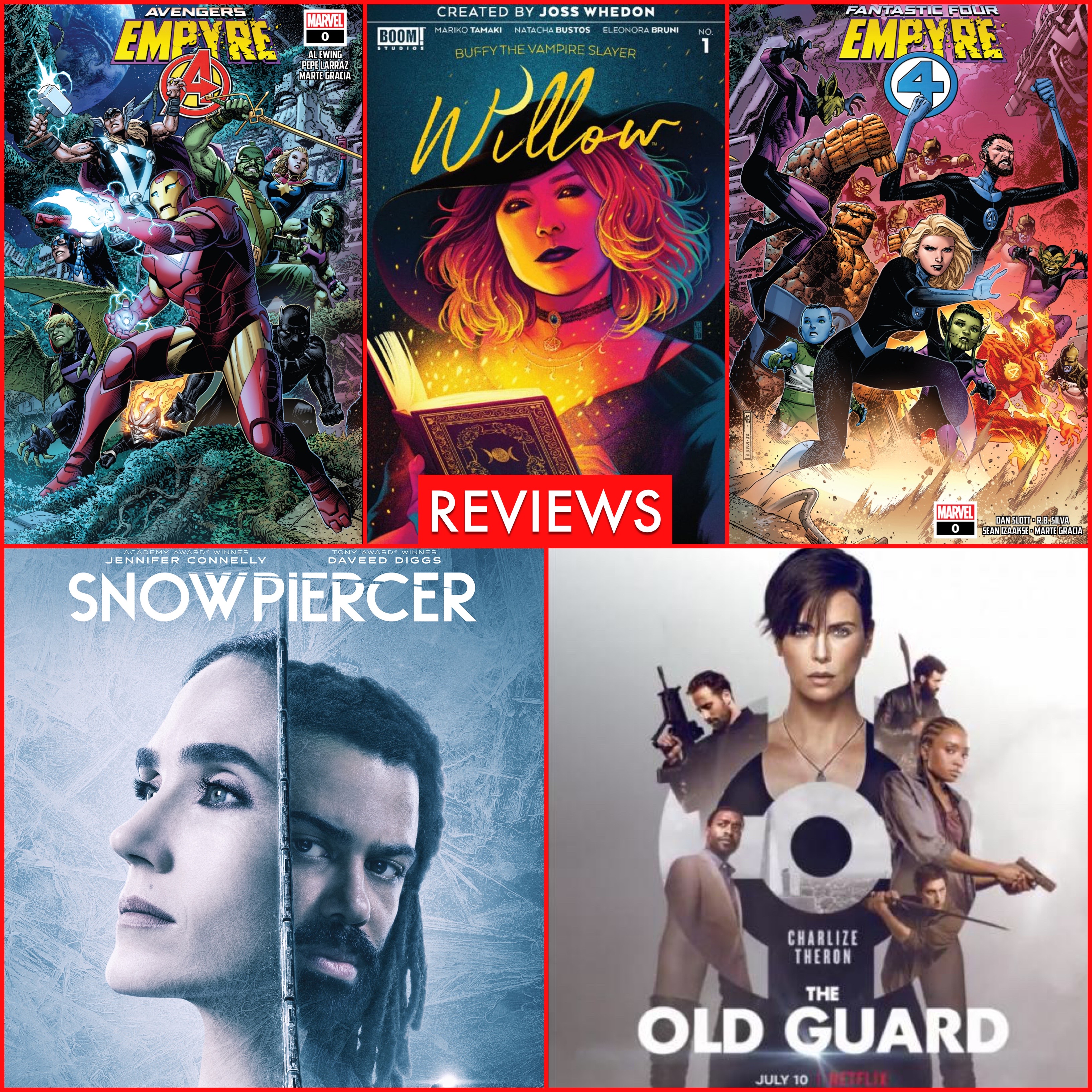WAITING
FOR TOMMY: JIMMY PALMIOTTI
By Richard
Johnston
Back for second
helpings? Last time Waiting For Tommy spoke to Jimmy Palmiotti,
he was knee deep in 21 Down and The Resistance. He's been
giving interviews about his next Justin Gray collaboration
for DC, The Monolith. But there were a few golem-shaped niggles
I wanted ironed out.
RICHARD JOHNSTON:
Monolith. A golem brought to life on the streets of New York
with an innate sense of justice. Is this a way to do superhero
comics with a whole set of new told, devices and trappings
as opposed to the classic secret identity/costumes/failings
of humanity?
JIMMY
PALMIOTTI: I personally think both can work, given
the right treatment. With the monolith, Justin and I wanted
to explore the gray line between good and evil and what repercussions
a character's actions would have in different environments.
Growing up reading comics, especially American comics, we
are drilled the same themes over and over to the point of
exhaustion. The old super powered good guy fighting super
powered bad guy thing has been dissected a million times,
over and over with mixed results. Brilliant books like Watchmen
and Dark Knight continue to show us that although these themes
are universal, you have to go somewhere else to really try
something fresh. With the Monolith, Justin and I dive into
NY history and classic themes and try to flush out something
we think is innovative for the reader, but at the same time
continue to give them what they always seem to be yearning
for a basic superhero.
RICHARD:
So what's basic about him? What is the core of the superhero
for you, in Monolith? And how does that differ from the traditional
portrayal?
JIMMY:
His approach to a situation and his decision-making are at
their most basic as far as execution goes. He sees and feels
things differently from the humans around him and at times
has difficulty in understanding the ramifications of his actions.
In this, he differs from the traditional thought process of
a moralizing hero who was raised within a normal societal
structure. Common human emotions like remorse and empathy
are alien to him and the questions are will he or does he
need to understand? An interesting aspect is that the moral
base he's learning from comes from two characters - Alice
and Tilt -- that have a less than moral background.
RICHARD:
The book Kavalier And Clay painted the golem as a modern-day
alternative to a superhero in New York. DC's Ragman had similar
traits. What is it that joins the superhero and the golem
so tightly?
JIMMY:
The Golem as an idea in fiction, deals with creating something
comparable to human but superhuman as well. Chabon drew reference
from Jewish folklore to insinuate that Siegel and Shuster
used that, combined with the view immigrants had of America
prior to and during WWII. A golem, like superheroes, existed
as a defender of the people. Superheroes are a natural evolution
of that idea. It's the sense of right from wrong that ties
both characters ideals together.
RICHARD:
A post-modern treatment of the golem in fiction can mirror
the act of creating the story in the creation of the golem.
If fiction is anything, it's life brought forth from nothing.
Does The Monolith get meta-textual on our ass? Or is that
one step too far and should be left to the likes of Mr Morrison?
JIMMY:
First of all if you look at the work we have done this past
year, particularly The Resistance, which some critics mistakenly
referred to as Morrison Lite, you'll see that there is nearly
always a subtext operating under the surface. However we prefer
to deal with individual human interaction and the influence
of society rather than making deliberate attempts at constructing
reality from fiction. Our agenda is different when working
on a book like this and frankly it seems that few people actually
understand where Grant's influences originate. Regardless
of that, we're looking to produce an interesting and entertaining
read without trying to alter the reader's perceptions in an
overt manner.
Pages:
1 | 2
| 3 | 4
Continued Here... |







